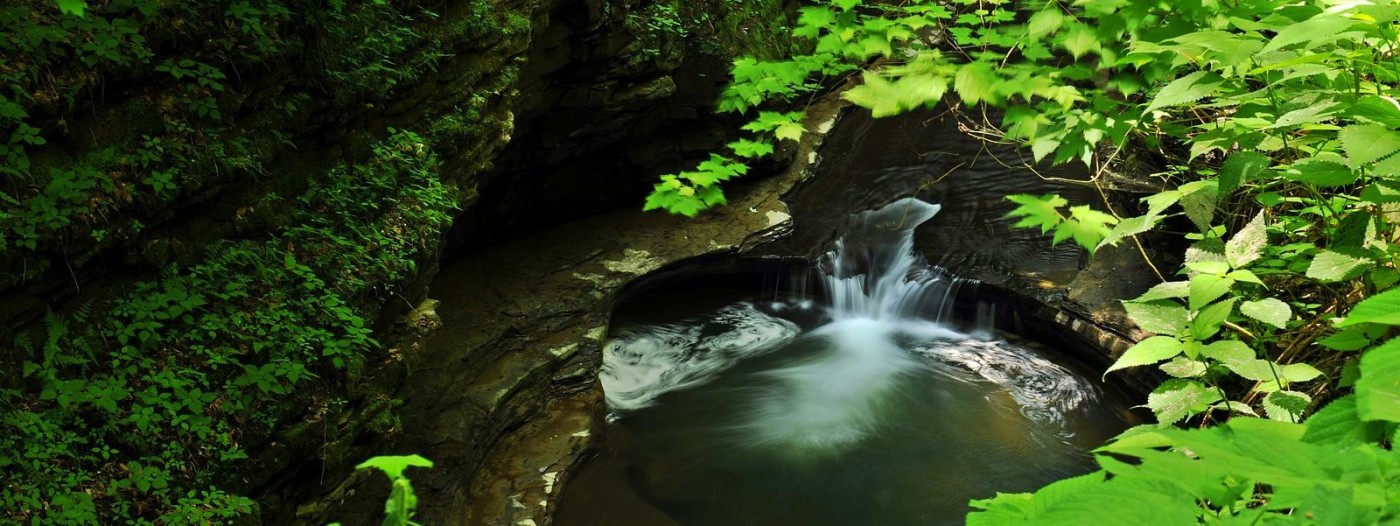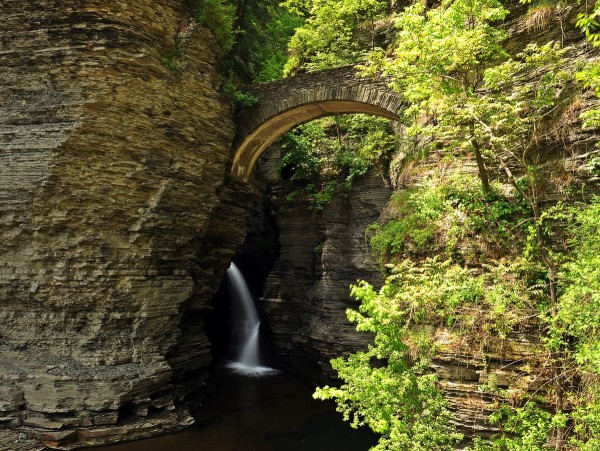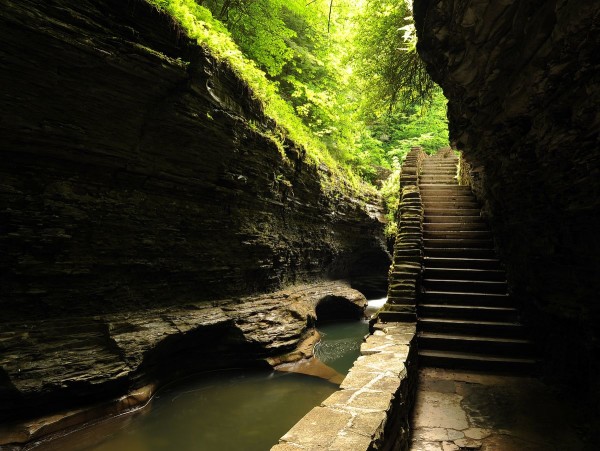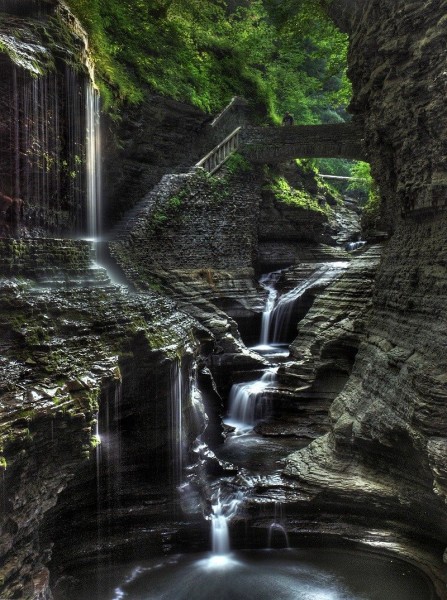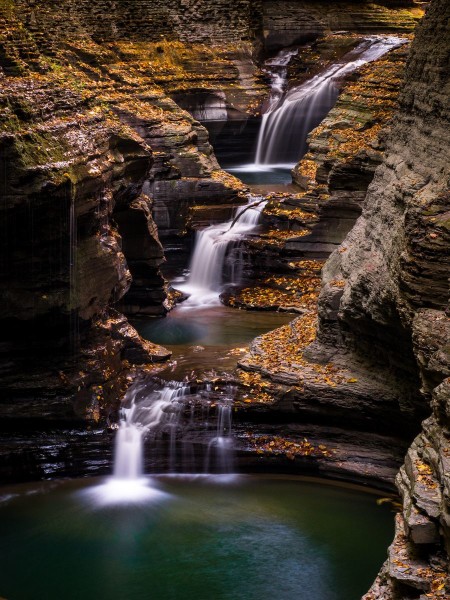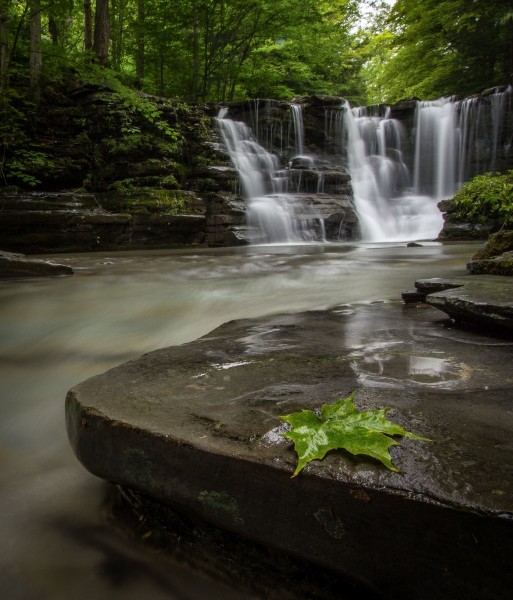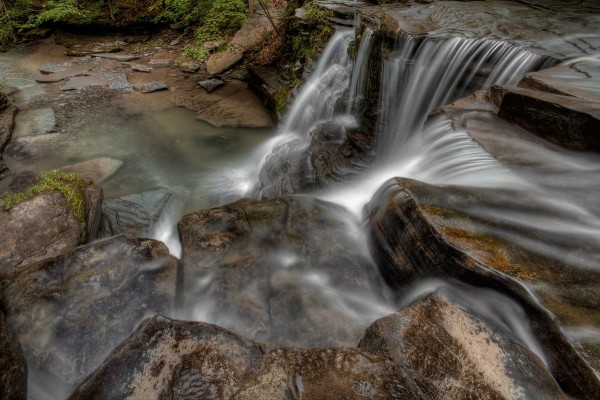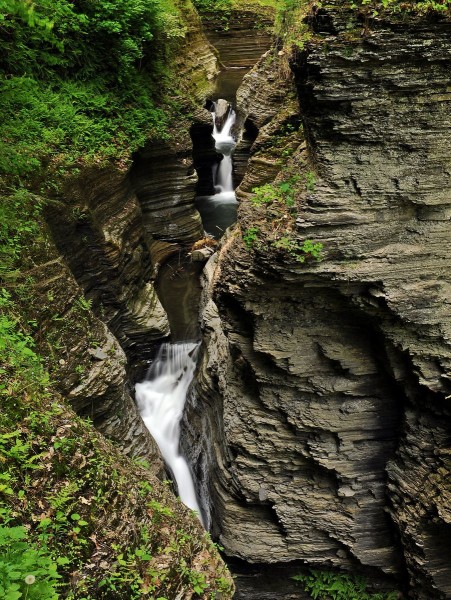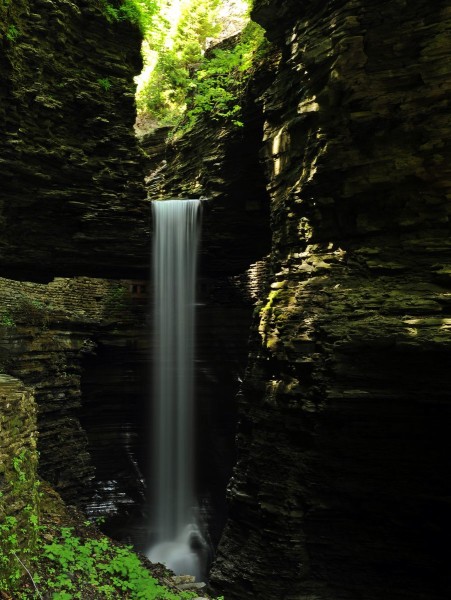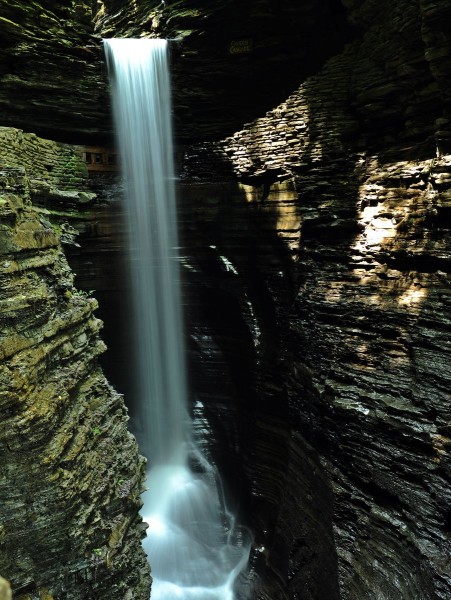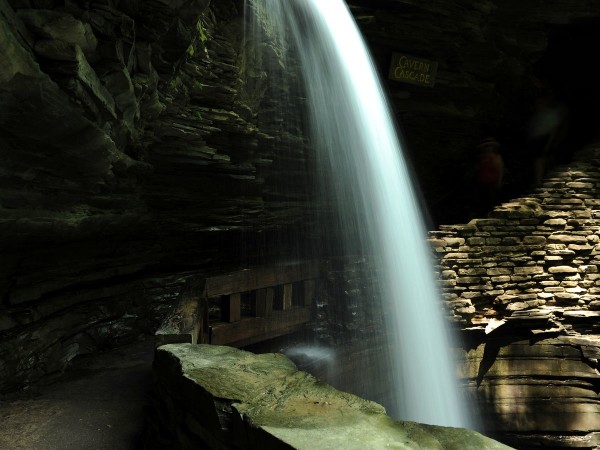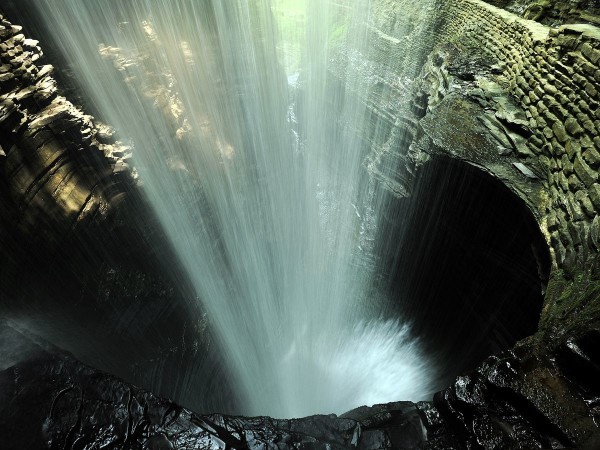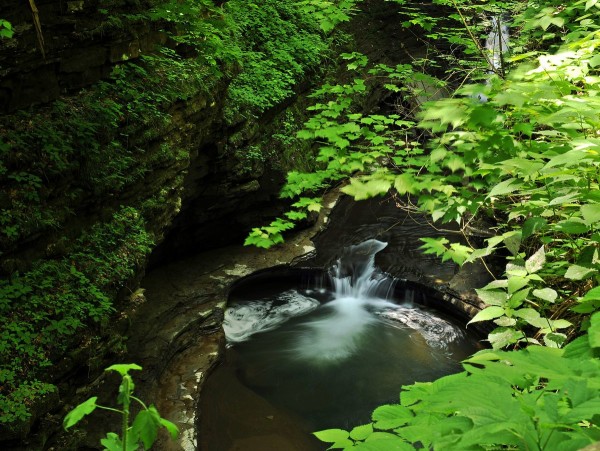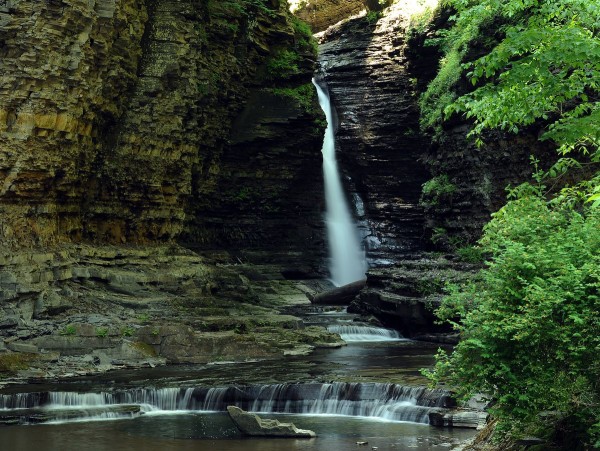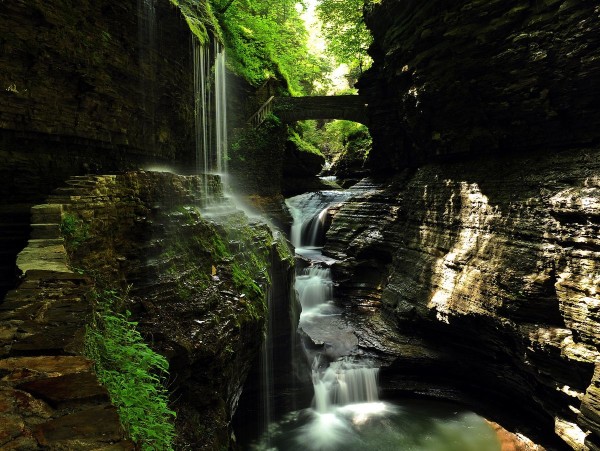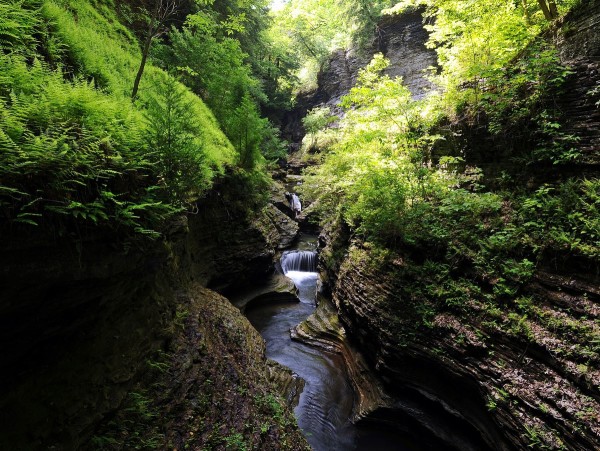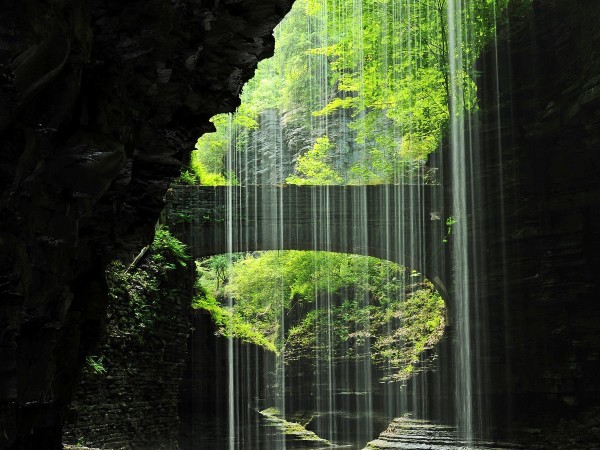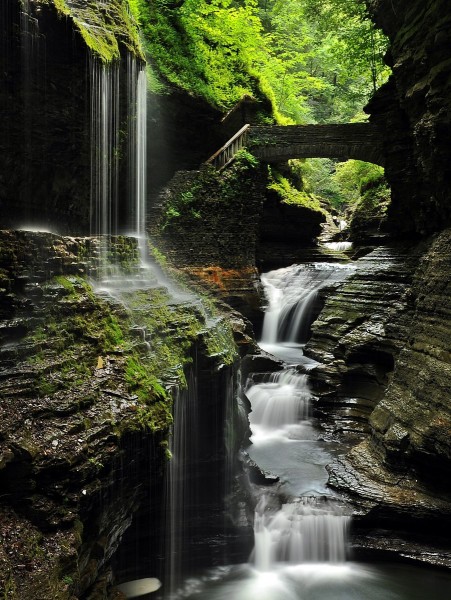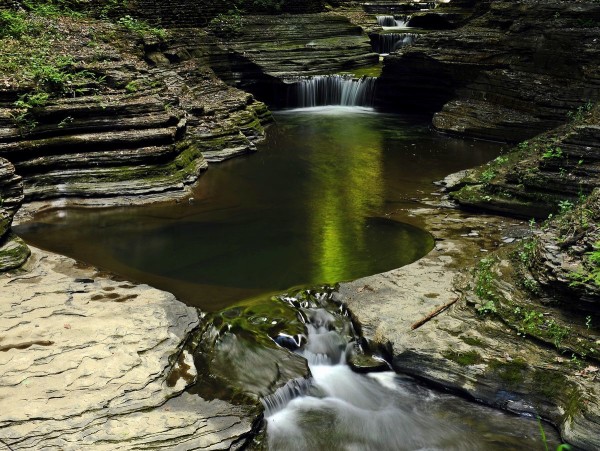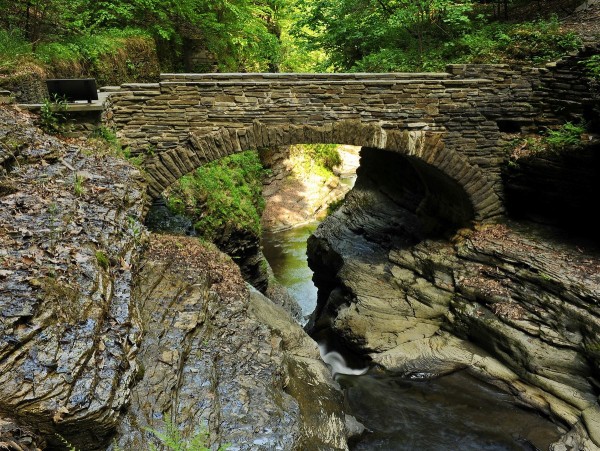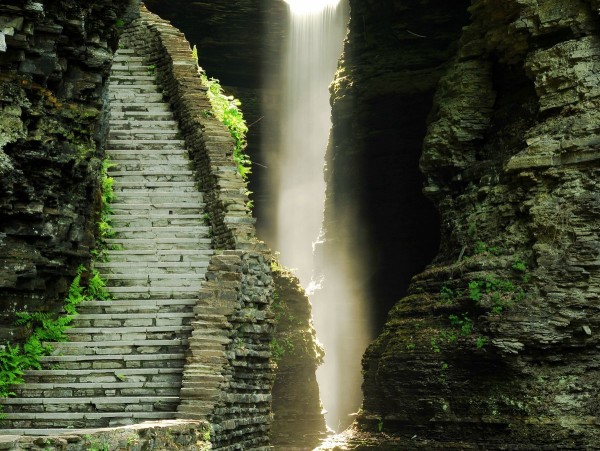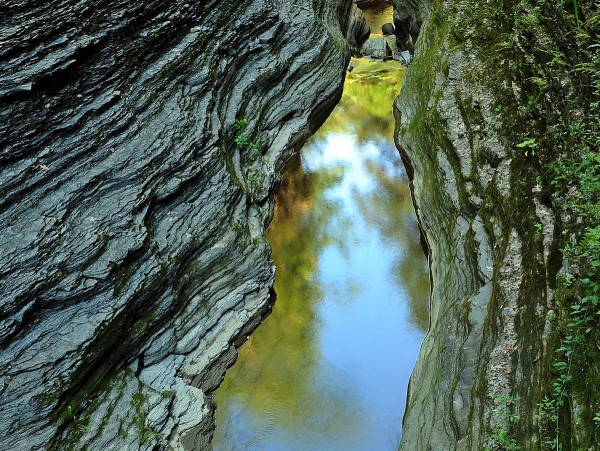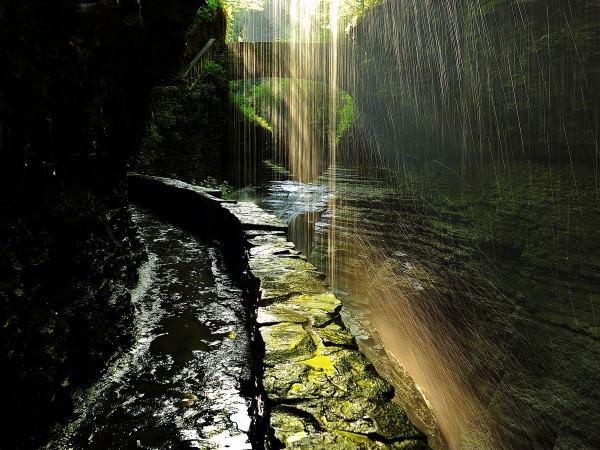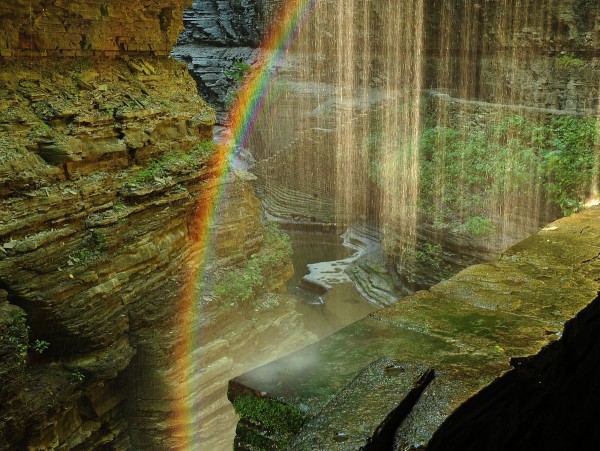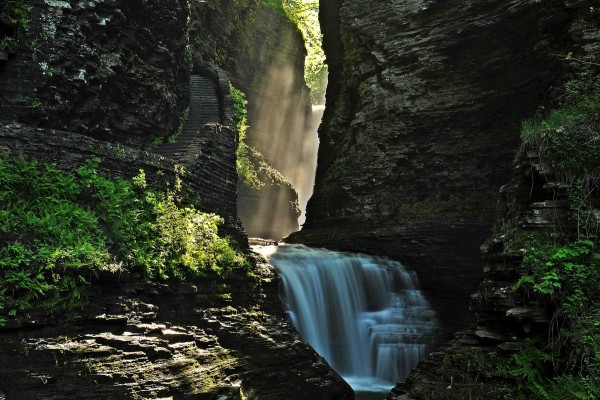There is no place more iconic of the Finger Lakes waterfall and gorge experience than Watkins Glen State Park. Stunning waterfalls, dramatic flumes, and picturesque potholes combine to make a gorgeous waterscape. The scene is further enhanced by handsome stone staircases, arched bridges, and winding tunnels that weave up and through the scenic gorge. The trail through the gorge is an awe-inspiring confluence of water’s persistent and powerful stone sculpting and a thoughtful merger of human craftsmanship. Simply put, the gorge is a can’t-miss trail for waterfall lovers and anyone seeking a true Finger Lakes experience.
The virtual merger of natural landscape and gorge infrastructure was actually a long, drawn-out process that can be boiled down to three phases. Across all the phases was a desire to bring tourists into the gorge to behold its wonders and many individuals and organizations contributed along the way. The first phase was marked by private ownership of the gorge that sought to capitalize on the budding natural tourism that was sweeping the nation. Visitors accessed the gorge along narrow paths and rickety wooden bridges.
When the state took over the “Glen,” these paths and bridges were deemed too dangerous. Concrete and iron railings replaced the wood in an effort to keep tourists safe. It was an odd juxtaposition of the beautiful, naturally carved gorge filled with industrial conveyances.
In 1935, catastrophe struck and most of the infrastructure was washed away in a flood. It was the best thing to happen to the park. A Civilian Conservation Corps (CCC) work crew began rebuilding and park designers got to start anew. Natural stone replaced concrete and stone walls replaced iron railings. Harmony with the gorge became the desired goal and today that handsome work is admired by a seemingly endless stream of visitors.
Stunning waterfalls, dramatic flumes, and picturesque potholes combine to make a gorgeous waterscape.
Like other gorges, the dramatic scene began to take shape as the glaciers receded, roughly ten thousand years ago. The interplay of erosion-resistant sandstone layers and highly erodible shale is what creates such a dramatic scene. These interwoven layers of shale and sandstone are products of an even more ancient epoch when much of New York was a vast inland sea millions of years ago.
Like the waterscape at Buttermilk Falls State Park, successive waterfall, plunge pool, and subsequent pothole formation have repeated over and over. But here, the plunge pools and potholes were so close together that their sidewalls eventually eroded away creating hourglass-like pools and an undulating curvaceous streambed. The sinuous and ribbon-like streambed is one of the many features that make the gorge at Watkins Glen unique.
In 1935, catastrophe struck and most of the infrastructure was washed away in a flood. It was the best thing to happen to the park. A Civilian Conservation Corps (CCC) work crew began rebuilding and park designers got to start anew.
First-time visitors will be surprised to find that the park is located within downtown Watkins Glen and that the park is wildly popular; the lower parking area fills early and often. Besides the gorge, Watkins Glen is also famous for car races, which take place annually during the Watkins Glen International. In order to avoid crowds, plan your visit around the annual race, and go when schools are in session, during the week, and/or early in the day. And, even then, anticipate the trail being busy. The gorge trail is only a mile long but plan on a leisurely pace to not only take in the amazing sights but also to wait at the numerous slowdowns, mostly around narrow parts of the trail and at the many photo ops.
Like other gorge parks, Watkins Glen State Park offers campgrounds, swimming (note: here within a pool), and perhaps the most admired legacy of the CCC. Similarly, the trail network has a gorge trail as well as rim trails. The rim trails are open year-round, while the gorge trail is closed late fall to early spring. The gorge trail opening changes year to year depending on the winter and springtime flooding, so check the park’s web site before visiting in the spring.
These interwoven layers of shale and sandstone are products of an even more ancient epoch when much of New York was a vast inland sea millions of years ago.
A shuttle connects the upper and lower portions of the park as well as the gorge entrances and exits. Hikers can bypass retracing their steps within the gorge by using the shuttle, but access to the upper entrance requires climbing the long and steep Jacobs Ladder staircase; it may be easier just to plan on an out-and-back trip within the gorge. Those who don’t mind a steep climb and wish to return while avoiding the crowds should note that the rim trails are practically empty when compared to the bustling gorge trail.
Visitors who wish to extend their visit to Watkins Glen or desire more outdoor activities would be well rewarded by visiting the nearby Catharine Valley Trail or the Finger Lakes National Forest.
More Park History
Originally viewed as an obstruction to the pastoral ambitions of early settlers, the “Glen” was relegated to industrial purposes. A large saw and grist mill were located in what is presently the parking area, and additional mills were sited further along the glen. An informal network of paths and wooden bridges delved ever deeper into the gorge providing access to these mills. These paths were used by the first tourists to the glen when Judge George C. Freer first open the gorge in 1851.
Morvalden Ells, a journalist from Elmira, was among the first tourists. He was so enraptured by the glen that he took on the principal role of promoting the gorge as a marvel of nature to rival Niagara Falls. His imaginative and often romantic descriptions of the Glen created the beginning of a tourist trade that endures today.
The Glen remained under private development and supervision until the turn of the 20th century when it was purchased by the state for $46,000. The original purchase included 103 acres and was administered by the American Scenic and Historic Preservation Society (ASHPS). It was at this point that the gorge began its transformation into what we see today. The transformation included removing the vestiges of its industrial past, but more importantly removing the hazardous network of paths, wooden stairs and bridges. Concrete, iron, and steel became the basis of the infrastructure, and great effort was expended broadening the paths and tying the new bridges and iron guard rails into the gorge’s walls. Workers were often lowered into the Glen on slings to carry out the work along the steep walls while blasting and tunneling took place elsewhere. The trail begins inside one of these hand-cut tunnels.
In 1935, catastrophic floods washed away virtually all of the work done by the ASHPS. A Civilian Conservation Corps (CCC), based in the park since 1934, was suddenly transformed from a labor force into a rescue team as the town was inundated. Later the corps became a major force in the park’s restoration and reconstruction.
Although first seen as a tragedy, park designers soon believed the devastating flood to be a blessing. Though the ASHPS had strived to build harmoniously with the landscape, bare iron and flat concrete were conspicuously industrial when compared with the naturally carved walls of the gorge. Instead, the new design incorporated natural stone in the paths, staircases, and stone walls. The goal was to blend the construction into the landscape and as you weave your way up through the Glen, one can’t help but admire how well they achieved that goal.
– The “More Park History” section was excerpted from Five Star Trails in the Finger Lakes and Central New York, provided by the author, Tim Starmer.

